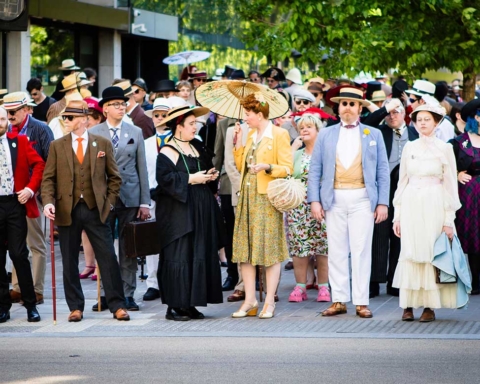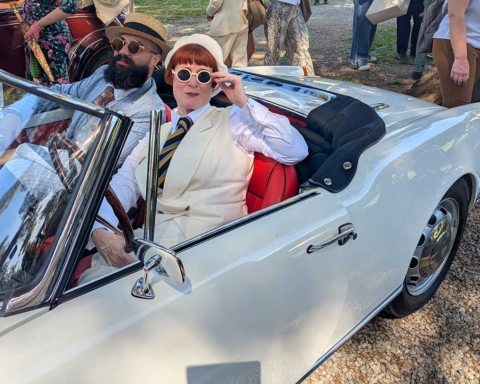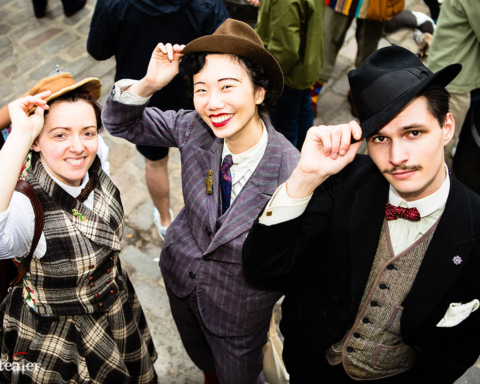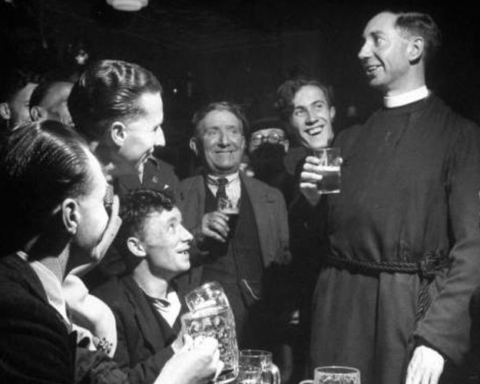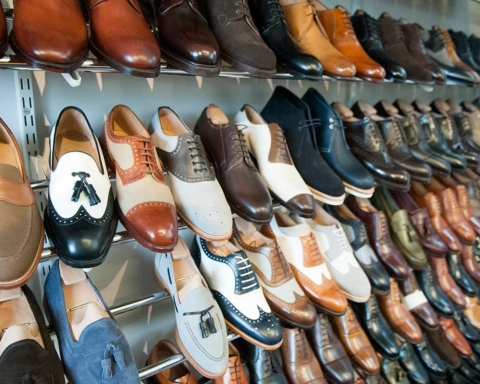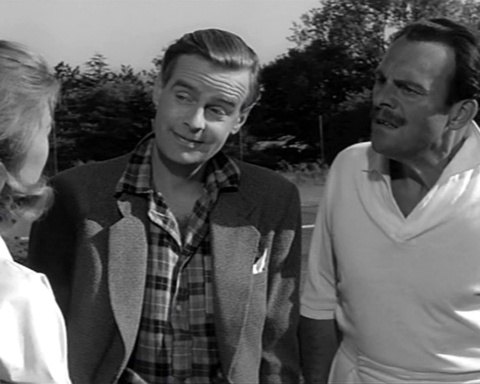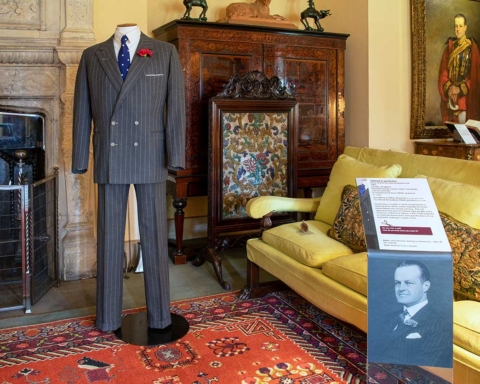Zack Pinsent has been around the Chap since he was 17 years old and, when he had just left school, and has now become a very successful maker of Regency clothing, as well as organiser and host of the Grand Regency Ball at Brighton’s Royal Pavilion.

So here we are in your Brighton tailoring atelier, and the first thing I see is not a tailor’s dummy but a Regency tea set?
In the Regency period, visiting your tailor was a very social occasion. Men would bump into their friends and have a chat. The modern equivalent would be women going shopping with a personal shopper joining them and they all drink champagne. But for Tailors it was generally Gin. There were tailor’s shops everywhere, not just on and around Savile Row. You couldn’t buy clothes anywhere else; they had to be made for you. If you didn’t go to a tailor, a journeyman tailor would come to you, then you’d repair and patch the garment yourself after that if a tailor wasn’t available. People took a lot more care in their clothes than we do now.
Was it as expensive to have clothes made then as it is today?
To some degree. Today you can go into Schiaparelli and buy a couture garment for £30,000, or Primark and buy a suit for £50. In the Georgian period, a fully embroidered silk court suit could have cost as much as a house. It’s hard to make sense of it compared to today, because the cost of living is so high now. And you don’t have to go back very far to find extreme comparisons. Today we probably buy quadruple the amount of clothes than our grandparents did in a year. Women in the 1950s bought about eight new items a year, and now that’s about what they buy in a weekend. I saw this interview with people working in factories in china and India, and one of the workers asked, ‘Do people in the West wash their clothes? Because we’re making so much of it. Do they wear it once and then throw it away?’ So that big bubble has got to pop at some point, but in the meantime, the most sustainable thing you can do is buy vintage, at boot sales and so on; basically don’t buy anything you cannot or don’t wish to repair.

We first met, when you had just turned 17, at the Chap Olympiad. You turned up on a sweltering day wearing a top hat and a fur coat, and we knew you belonged with us. Was that your pre-Regency era?
Yes, it was also pre my being able to make clothes, so it was all vintage stuff. I’d been subscribing to The Chap for a couple of years by that point, and I thought, hurrah, I can go and meet other Chappish people!
How much further back was your pull towards old-fashioned clothes?
Oh, we have to go back much further than 17. I have absolutely always loved, from an early age, Dracula and vampires. The macabre, the fun, the spooky… I would watch Christopher Lee’s Dracula and think, what is so fabulous about them? Obviously demonic powers but also… clothes! They get to be dramatic; they get to be suave. Everyone else in my family has birthdays in October but mine’s in June, so every summer there’d be a birthday party for me with bat shaped cakes and kids running around in blistering sunshine in witch costumes. Kids just love dressing up, and the worst thing you can say to a child is to stop dressing up. So my parents never did, and this is the result!

So what happened between that discovery aged 14 and when we met you when you were 17?
Well, what I realised with those clothes was that I had the beginnings of a capsule wardrobe, and could swap in waistcoats and trousers. That’s all anyone needs: one really good outfit that you really like, and then you can swap things in and out. Once you have a capsule wardrobe you begin to develop your own look, and your own style. And then you become interesting to look at.
Don’t you think most men are quite awkward about expressing themselves through clothes?
Clothes can just be clothes, but if dressing a certain way can make you feel good about yourself before you’ve even left the house, then you should wear them. I mean, we live in a hellscape. We might as well dress nicely while the world burns.
There was a time when, at the weekend, I’d be home from boarding school and wearing my vintage gear and I’d go into Brighton and see people walking about of my own age. And I would see someone in the street who I thought I knew from school, but no, it was just someone who was dressed exactly like them! There was fad for baseball caps with the sticker on them, and my friends would be saying, oh it’s great, it’s limited edition. And I’d say yes – limited edition of 40,000! And you spent how much on that? I’d spent the same on a whole Victorian outfit. I was walking around in vintage and bowler hats and all that. My two style inspirations were David Suchet’s Poirot and Patrick Macnee’s John Steed. Then I met you guys and was very much star struck, because I knew I’d met my people.

Your second grand Regency ball at the Royal Pavilion in Brighton is coming up in January. How did you get from making clothes for people who attend Regency balls to actually running a Regency ball yourself?
I was born and bred in Brighton. The Pavilion is absolutely iconic and not enough people know about it. I’ve always wanted to go to a ball there, and there hasn’t been once since the anniversary of the battle of Waterloo in 2015. So I decided to do it myself. The first one was in May 2024, 150 people from 17 different countries. It was a huge undertaking and everyone said, oh it’s too expensive, no-one will come. But the tickets sold out in three minutes and I had a waiting list of 200. You see there’s nothing in the UK on the scale of something like Fête Galante in Versailles. There’s a banqueting hall at the Pavilion and we serve a three-course meal inspired by Regency dishes.
We had an opening soiree on the Friday, dance practice and the actual ball on Saturday, and then a promenade through Brighton in full costume, while the Fringe festival was in full swing. For the next one in 2026 we’re going even bigger, with one ball at the Pavilion and another one somewhere else. I’ve got a five-year-plan to build and create the Brighton Regency Festival. I want to take Brighton away from its reputation as somewhere just for stag and hen dos and share the wonderful history and culture we have here. Brighton would not exist in the way that it does without the Pavilion.


